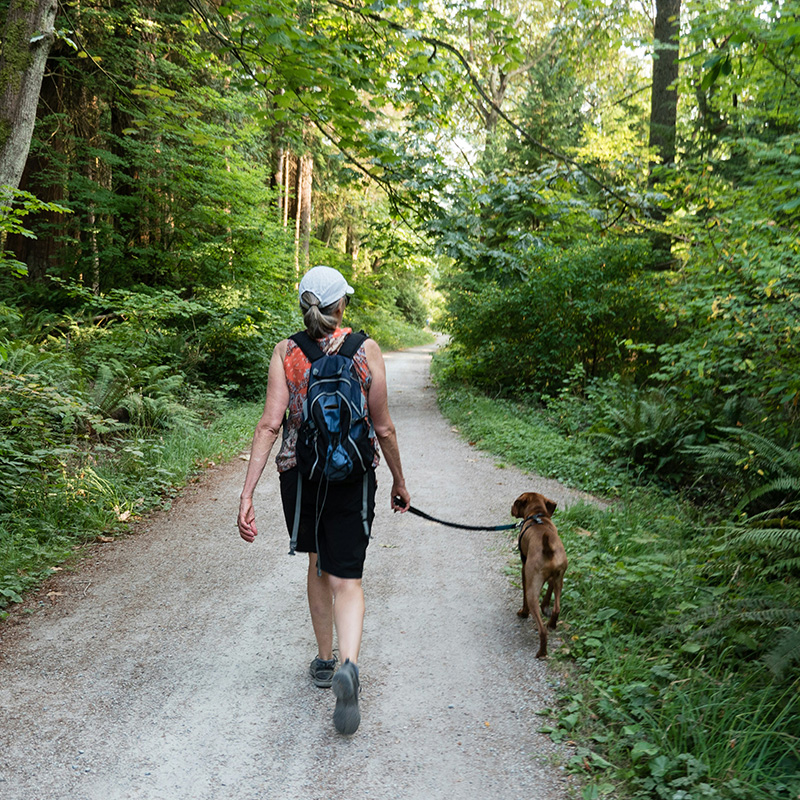Summer Adventure Safety: Hiking and Swimming with Pets
 Summer in the UK is the perfect time to enjoy the great outdoors with your pets. Whether you’re heading for a countryside hike or planning a day by the lake, these activities can be a wonderful way to keep both you and your furry companion fit and happy. However, warm weather, unfamiliar environments, and increased activity can present risks for pets if not carefully managed. At Broadway, we want to help you make the most of summer while keeping your pets safe and healthy.
Summer in the UK is the perfect time to enjoy the great outdoors with your pets. Whether you’re heading for a countryside hike or planning a day by the lake, these activities can be a wonderful way to keep both you and your furry companion fit and happy. However, warm weather, unfamiliar environments, and increased activity can present risks for pets if not carefully managed. At Broadway, we want to help you make the most of summer while keeping your pets safe and healthy.
Before You Set Off
Preparation is key to a safe adventure. Start by ensuring your pet is fit for the activity you have in mind. A quick health check with us is a great idea, especially for older pets, very young animals, or breeds prone to breathing difficulties. If your pet isn’t used to long walks or swimming, build up their stamina gradually.
Check the weather forecast and avoid hiking or swimming in extreme heat. Hot pavements and trails can burn paws, and high temperatures increase the risk of heatstroke. Plan your route so there is access to shade and fresh water, and remember that some popular trails may not be dog-friendly — always check before you go.
Hiking Safety Tips
Keep hydrated: Carry plenty of water for both you and your pet, and stop frequently to let them drink. Collapsible travel bowls are lightweight and convenient.
Watch for hazards: Long grass and woodland can harbour ticks, grass seeds, and other hazards. Keep your pet up-to-date with parasite prevention and check them over after your walk.
Lead control: Keep dogs on a lead near livestock, wildlife, or cliff edges. Even the most obedient dog can be tempted to chase, which can be dangerous for both them and other animals.
Paw care: Uneven or rocky terrain can cause cuts or abrasions. If your hike involves rough ground, consider protective boots for your dog and check their paws regularly.
Help prevent grass seed dangers: If your pet has very hairy ears or furry paws, keep the hair trimmed in those areas during the summer or avoid grassy areas altogether—grass seeds can become embedded in fur and cause painful infections.
Swimming Safety Tips
Many dogs love to swim, but not all are natural swimmers, and water can pose hidden dangers.
Choose safe swimming spots: Avoid fast-flowing rivers, strong currents, or areas with blue-green algae, which is toxic to dogs (see below). Check for water quality notices before letting your pet in.
Blue-green algae awareness: Blue-green algae are toxin-producing cyanobacteria that can be found in lakes, ponds, and slow-moving rivers, especially during warm weather. They often appear as a green, blue-green, or brown scum or paint-like layer on the water’s surface, sometimes gathering along the shoreline. These toxins are extremely dangerous to pets — even small amounts can cause vomiting, diarrhoea, weakness, seizures, liver failure, or death. If you suspect water is contaminated, do not allow your pet to drink from or swim in it. If your pet does come into contact with blue-green algae, rinse them thoroughly with clean water and contact us immediately, even if they appear well. Rapid treatment is essential to give the best chance of recovery.
Supervise at all times: Even confident swimmers can get into trouble. Stay close to your dog in the water and call them back to shore if they appear tired or start swallowing water.
Consider a dog life jacket: Especially useful for smaller dogs, breeds with short legs, or those swimming in deeper water. These jackets provide buoyancy and often have a handle for easy lifting.
Rinse after swimming: Freshwater can contain bacteria, while saltwater can irritate the skin. Always rinse your dog with clean water and dry them thoroughly to avoid skin problems.
Heatstroke Awareness
Heatstroke can occur quickly and is a veterinary emergency. Signs include excessive panting, drooling, weakness, vomiting, or collapse. If you suspect heatstroke, move your pet to a cool, shaded area, offer small amounts of water, and contact us immediately.
Post-Adventure Care
After a hike or swim, give your pet a thorough check-over. Look for cuts, ticks, or sore areas, and monitor them for signs of tiredness or discomfort. Providing a comfortable resting place and plenty of fresh water will help them recover.
Making Memories Safely
Hiking and swimming with your pet can strengthen your bond and provide mental and physical stimulation for them. By planning ahead, watching for hazards, and knowing when to take a break, you can ensure your adventures are safe, enjoyable, and full of happy memories.
If you have any concerns about your pet’s health before or after outdoor activities, please contact our team. We’re here to keep tails wagging and paws moving all summer long.
-
Previous
-
Next

